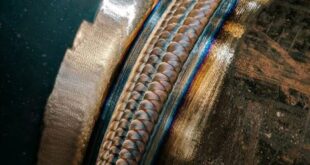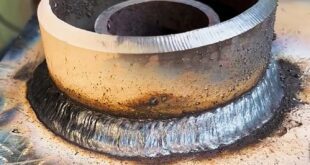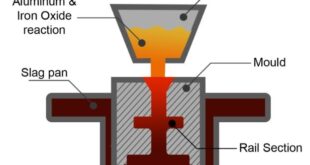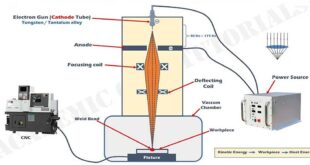What Is Flux Core Welding Used For?
Flux core welding (FCW) has emerged as a pivotal technique in the world of fabrication due to its robustness and versatility. This article explores what flux core welding is, where it is used, and why it stands out from other welding methods.
The Basics of Flux Core Welding
What is Flux Core Welding?
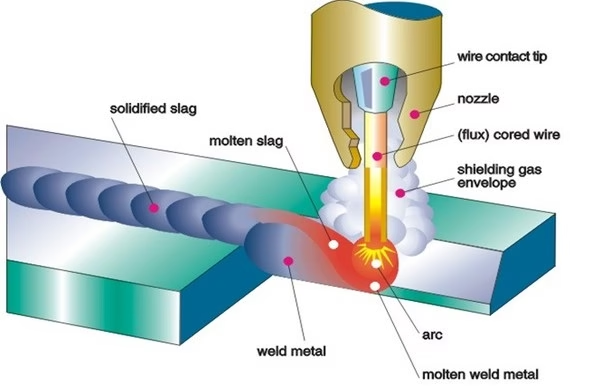
Flux core welding is a semi-automatic or automatic arc welding process. It utilizes a tubular wire that is filled with flux to lay the weld. This method is distinct because it does not require a separate shielding gas, which is essential in other types of welding like MIG and TIG.
Key Components and Equipment
Flux Core Wire
The wire used in FCW is unique because it contains flux at its core, which, when burned by the electric arc, generates a shielding gas that is essential for protecting the weld pool from contamination.
Welding Machines and Settings
Specialized welding machines designed for FCW allow adjustments in polarity and amperage to suit different thicknesses and types of metal. Settings can be crucial for achieving the desired weld quality.
Advantages of Flux Core Welding
Enhanced Penetration
FCW is known for its deep penetration, making it ideal for thick materials.
Versatility in Various Environments
Unlike other welding techniques that require windless environments, FCW can be performed outdoors and in variable atmospheric conditions.
Increased Welding Speed
The method is faster than traditional welding, making it a preferred option in projects requiring rapid turnaround.
Applications of Flux Core Welding
Industrial Manufacturing
From heavy machinery to steel structures, FCW is extensively used due to its strength and efficiency.
Construction Projects
FCW’s ability to join thicker metals with speed makes it invaluable in construction, especially in building frameworks and large beams.
Automotive Repairs
Repair work in automotive industries often uses FCW for fixing frames and other heavy-gauge components.
Shipbuilding and Offshore Rigs
The maritime sector benefits from FCW’s robustness, making it suitable for building ships and maintaining offshore platforms.
Comparing to Other Welding Methods
Flux Core vs. MIG Welding
While both use a continuous wire feed, FCW does not require external gas, making it more adaptable in outdoor or drafty environments.
Flux Core vs. TIG Welding
FCW is quicker and can handle rustier materials compared to TIG, which requires cleaner metal surfaces.
Suitability for Different Job Types
FCW is preferred for its speed and flexibility, whereas TIG is favored for its precision on thinner, more delicate metals.
Challenges and Limitations
Handling and Safety Concerns
Proper training is necessary to handle FCW equipment safely, as the smoke and fumes generated can be hazardous.
Environmental and Health Impacts
The process emits fumes that may require mitigation measures to protect welder health and maintain environmental standards.
How to Get Started with Flux Core Welding
Essential Skills for Beginners
Understanding the basics of metal preparation, machine setup, and post-weld cleanup are crucial.
Tips for Effective Flux Core Welding
Practical advice includes maintaining correct angles, adjusting speeds, and choosing appropriate wires for different jobs.
FAQs
What safety equipment is essential for flux core welding?
Essential safety equipment includes a welding helmet, fire-resistant clothing, gloves, and respiratory protection.
How does weather affect flux core welding?
While flux core welding can be performed outdoors, excessive wind can disperse the shielding gas, and moisture can affect weld quality.
Can flux core welding be used on all types of metals?
Flux core welding is primarily used on carbon steel, stainless steel, and some nickel alloys, but is not suitable for materials like aluminum.
What are the cost considerations when starting flux core welding?
Initial costs include purchasing a suitable welder, flux core wire, and protective gear, with ongoing expenses for wire and maintenance.
How does flux core welding impact the environment?
Flux core welding emits fumes and gases that can be harmful if not properly managed with adequate ventilation and environmental controls.
Conclusion
Flux core welding represents a powerful tool in modern metalworking, capable of delivering quality welds under challenging conditions. Its role is expected to grow as technological advancements continue to expand its applications.
 Welding of Welders All about Welding and Welders
Welding of Welders All about Welding and Welders
